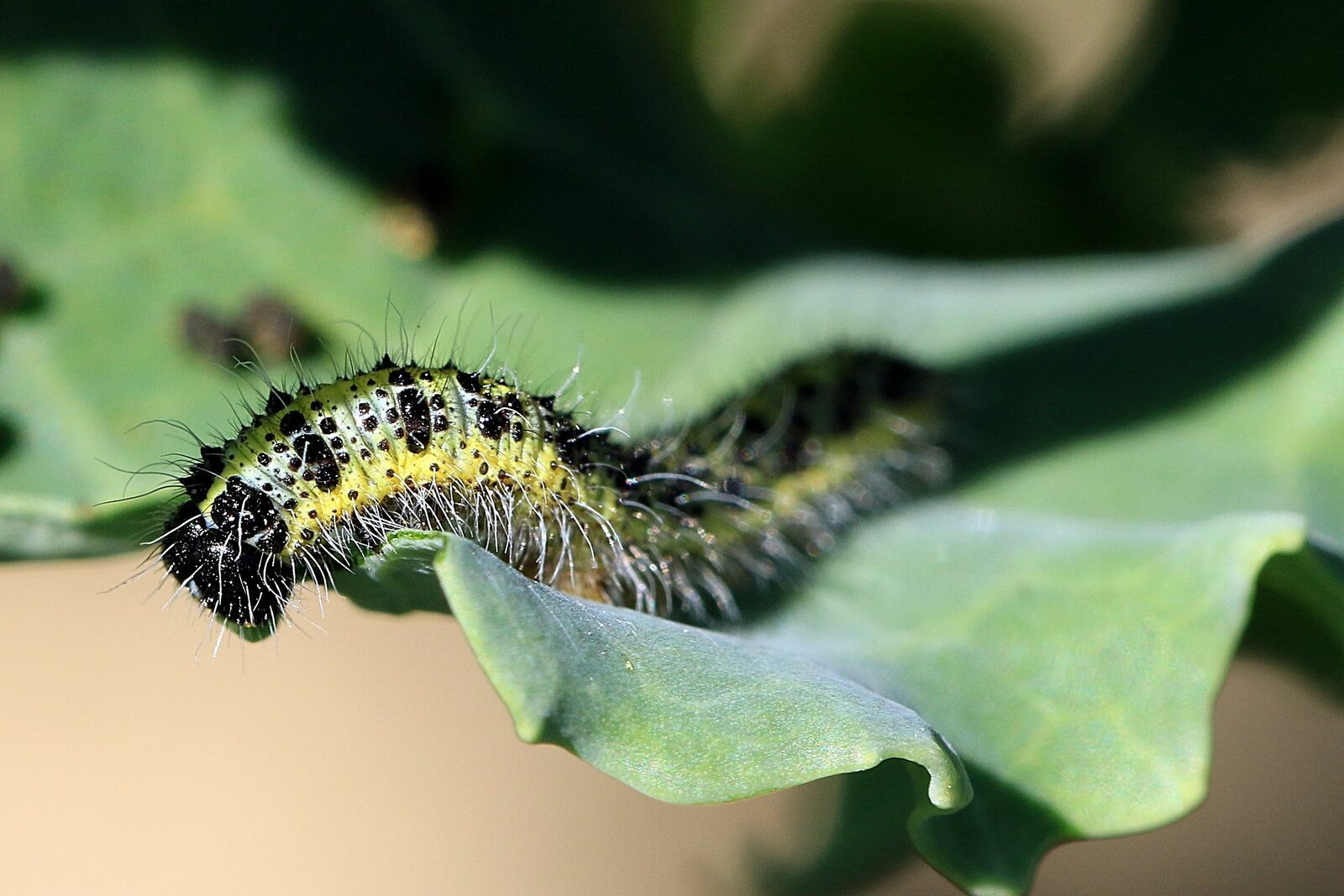
Cabbage White Butterfly in the Garden: How to Prevent and Control
Cabbage is a very versatile vegetable; there are leaf cabbage, head cabbage, kohlrabi and Brussels sprouts. In addition, some types of cabbage are hardy and can therefore be grown all year round. However, there are also pests, such as the cabbage white butterfly, which can damage cabbage and quickly ruin a harvest. In this article, you will find out how to prevent cabbage white butterfly infestation and how to combat cabbage white butterflies naturally.
This Article Contains:
- Pests of Cabbage Plants: The Cabbage White Butterfly
- Small & Large Cabbage White Butterfly: Cabbage White Butterfly Eggs
- Cabbage Butterfly Caterpillar: How to Recognize Them
- What Do Cabbage White Caterpillars Eat?
- White Butterflies in the Garden: What Helps Against the Cabbage White Butterfly?
- Mixed Cultivation Against Cabbage White Butterflies: Companion Plants for Cabbage
- Use Crop Protection Nets Against Cabbage Pests
- Beneficial Insects Against Cabbage White Butterfly Caterpillars: Predators
- Frequently Asked Questions: Combating Cabbage White Butterflies
Quick Overview
The Cabbage White Butterfly: An Overview
- Butterfly (active from March, egg-laying from April/May, especially July-August):
- Large cabbage white butterfly: White to light yellow, two black spots on wings.
- Small cabbage white butterfly: Whitish, one black spot on wings.
- Caterpillars:
- Large cabbage white butterfly: approx. 5 cm/2 in long, light green with a black pattern and easily recognizable, long hairs.
- Small cabbage white: Approx. 3 cm/1.2 in long, rather dark green, with many small black dots and somewhat shorter hairs.
Keep Cabbage White Butterfly Caterpillars & Eggs Away
- Place companion plants such as tomatoes, celery or herbs next to endangered plants.
- Collect caterpillars.
- Cover plants with crop protection nets.
- Encourage beneficial insects in the garden.
Pests of Cabbage Plants: The Cabbage White Butterfly

The cabbage white butterfly is a butterfly and a frequent guest in our gardens. It is therefore all the more important to protect your cabbage plants from infestation. You can find out more about the appearance and development of the cabbage white butterfly below.
Small & Large Cabbage White Butterfly: Cabbage White Butterfly Eggs
There are large and small cabbage white butterflies. Both butterfly species belong to the white butterfly family (Pieridae). They are difficult to distinguish from each other. The large cabbage white (Pieris brassicae) is white to light yellow, has two black dots on its wings and black wing tips. The small cabbage white butterfly (Pieris rapae) is white-yellowish, has a black spot on its wings and also black wing tips. It is somewhat more common in gardens, as it is less specialized in its choice of food than the large cabbage white butterfly.
The cabbage white butterfly lays its eggs from spring to summer on the leaves of cabbage and other plants, from which the cabbage white butterfly caterpillars hatch after approx. 2 - 4 weeks. The first cabbage white butterflies can be seen in the garden from March. As caterpillars are very hungry after hatching, an entire cabbage plant is quickly eaten, especially when they are still small. The butterfly lays the yellowish-green eggs of the large cabbage white in groups, while the eggs of the small cabbage white are laid individually.
When Does the Cabbage White Lay Its Eggs?
Female cabbage white butterflies usually lay aparticularly large number of eggs on plants between July and August. However, depending on the weather conditions, eggs can also be laid on your plants a little earlier or later (sometimes as early as April/May). These are usually laid on the underside of leaves. You should therefore look under the leaves when checking your plants.
Cabbage Butterfly Caterpillar: How to Recognize Them
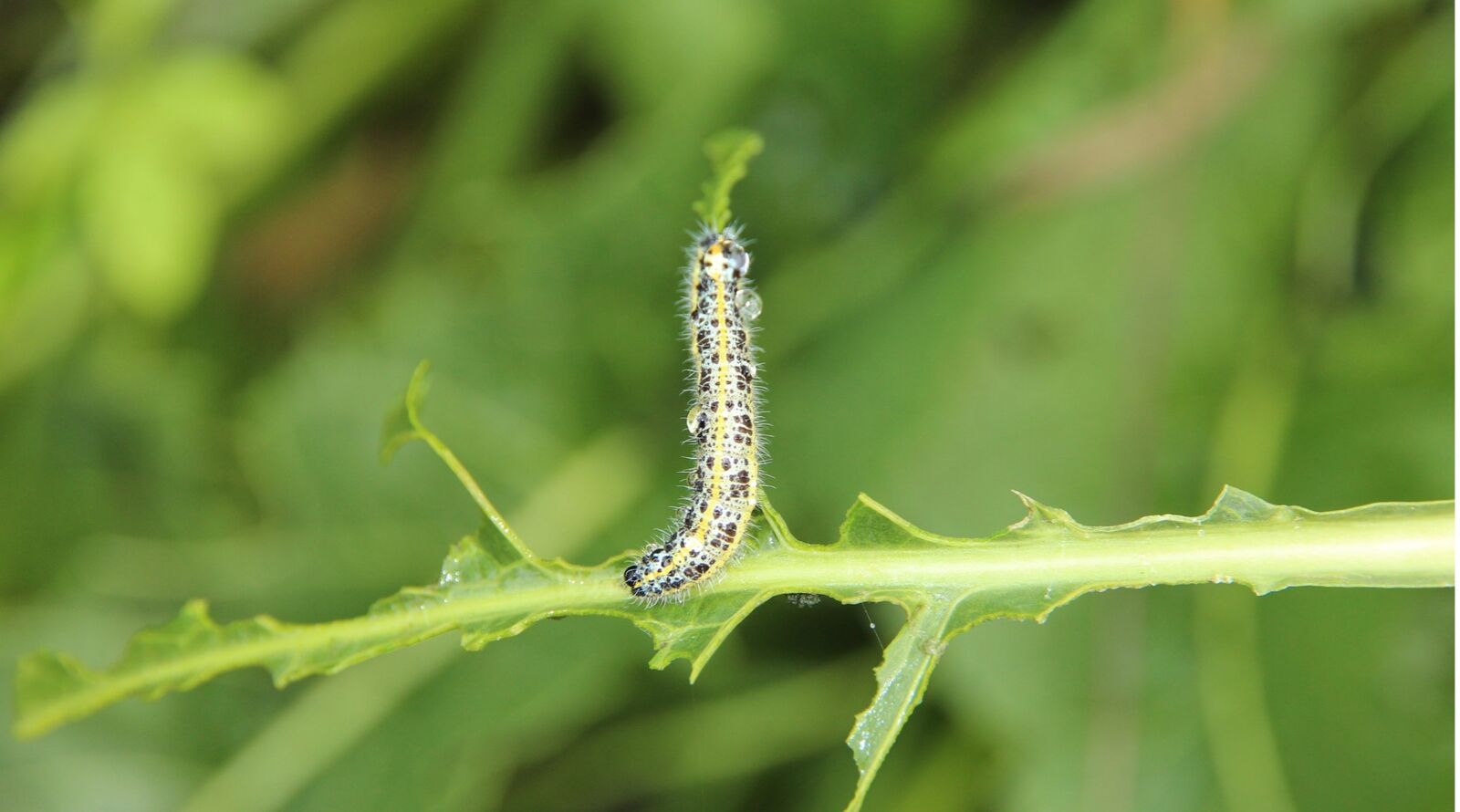
The butterfly feeds on flower nectar, but does not eat the cabbage plants itself, but its caterpillars. These hatch after 2 - 4 weeks from the butterfly eggs that the cabbage white butterfly lays on cabbage plants. You can recognize the infestation by holes in the leaves of your cabbage, eaten leaf edges, traces of droppings on leaves or by the yellow to green-black caterpillars on your plants.
| Caterpillars of the Large Cabbage White Butterfly | Caterpillars of the Small Cabbage White Butterfly |
|---|---|
| Approx. 5 cm/2 in long | Approx. 3 cm/1.2 in long |
| Yellow-light green | Green-dark green |
| Black, easily recognisable pattern | Many small, black dots |
| Easily recognisable, long hair | Rather short hair |

Need More Help?
To exchange ideas with other gardeners and benefit from their experiences, you can visit our Fryd community. If you are not sure whether you are dealing with the cabbage white butterfly, you can certainly get help here.
Join Community NowWhat Do Cabbage White Caterpillars Eat?
Caterpillars like to eat tasty leaves from vegetable plants in the garden. Depending on the type of caterpillar, they have different tastes. Leafy vegetables such as cabbage are particularly popular. Initially, the caterpillars feed on the outer leaves of your vegetables. While the caterpillars of the large cabbage white butterfly travel in groups and usually only eat the outer leaves, the caterpillars of the small cabbage white butterfly make their way to the heart of your plants over time.
Once the caterpillars have reached the heart of your plants, it is almost impossible to save your plants. You should therefore act quickly in the event of an infestation and collect the caterpillars from your plants immediately.
The caterpillars of the cabbage white butterfly are particularly fond of eating:
- cabbages (cauliflower, broccoli, kale, kohlrabi, Brussels sprouts, pointed cabbage, white cabbage)
- nasturtium
- caper family
- foxtail family

White Butterflies in the Garden: What Helps Against the Cabbage White Butterfly?
If you see white butterflies flying in your garden, you should take a closer look. This is usually the cabbage white butterfly, which is widespread here. It is best to protect your cabbage plants from the butterflies. There are various ways to prevent the cabbage white butterfly from laying its eggs on your plants, which we will explain below.
Keeping Cabbage White Butterflies Away and Preventing Them: Protecting Cabbage Leaves
You should check your plants regularly for egg or caterpillar infestation. If your plants are already infested with caterpillars, you should collect them as quickly as possible. It is best to wear gloves and move the caterpillars far enough away from your garden (at least 25 m/27 yd) so that they cannot come back. In combination with crop protection nets, this is often the most effective method of protecting your plants from pest infestation.
Fighting Cabbage White Butterflies: Home Remedies Against the Pest
Garlic powder, seaweed lime, tobacco ash and stone meal should also help to keep the cabbage white butterfly away from your plants. The caterpillars and butterflies of the cabbage white butterfly do not like the smell of the powders and therefore stay away from your plants. Instead, dust your plants with the powder. However, this must be sprinkled again after heavy or repeated rainfall (from approx. 20 mm/0.8 in).
Some plant dips or plant decoctions, such as tansy, are also said to deter the cabbage white butterfly. However, you should not use nettle slurry on cabbage white butterflies, as the butterfly loves the smell of the slurry and is attracted to it.
We strongly advise against the use of pesticides, as these usually not only harm the cabbage white butterfly, but also other beneficial insects, birds and animals.
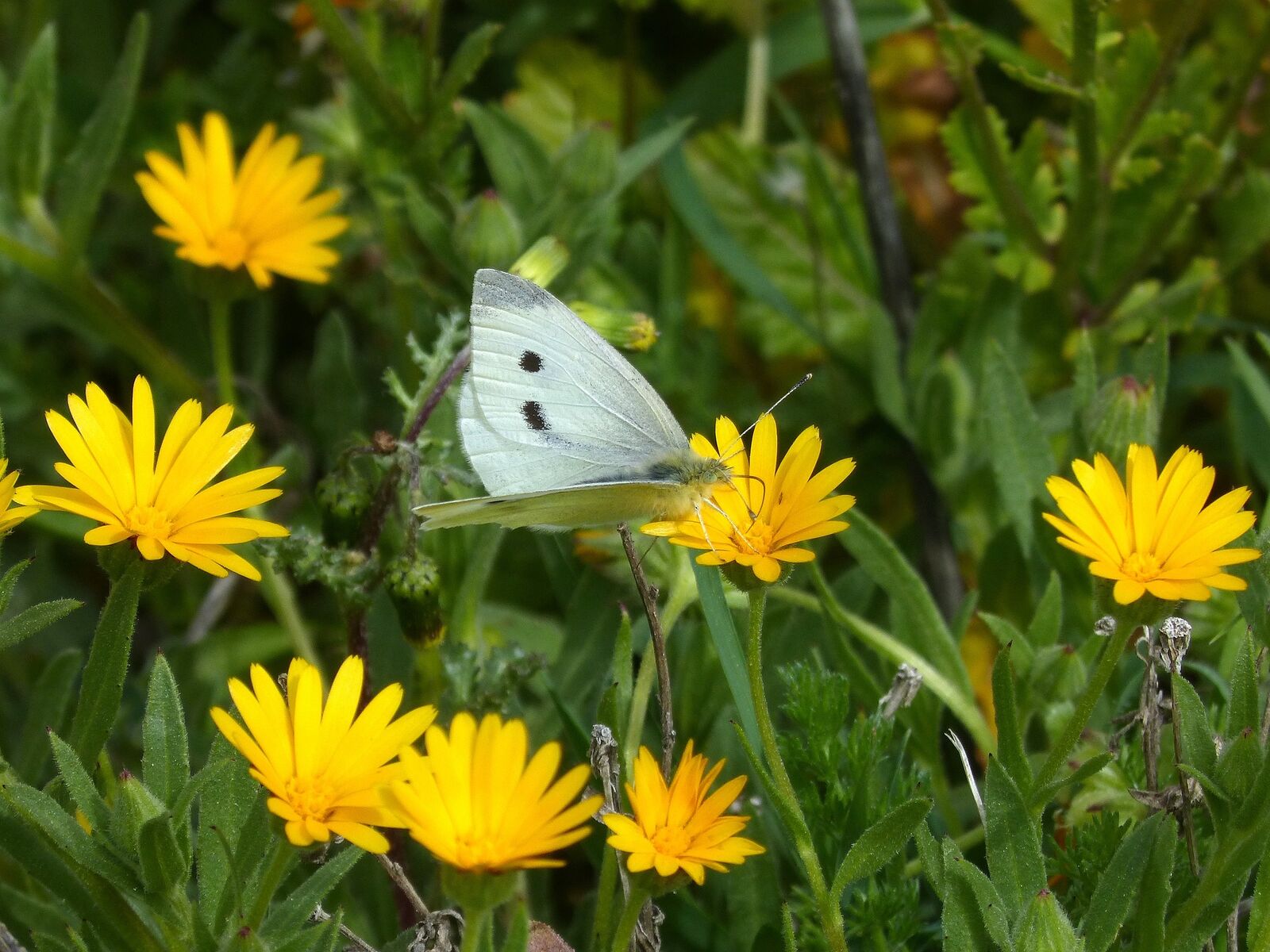
Mixed Cultivation Against Cabbage White Butterflies: Companion Plants for Cabbage
In addition to providing plenty of variety in the bed, a mixed crop also has advantages when it comes to controlling pests and diseases. The cabbage white butterfly is confused by strong smells such as celery or tomatoes, which is why it is worth planting these in a mixed crop with cabbage. A mixed crop does not offer complete protection, but can help to minimize damage to plants. You can find a list of good and bad companions in our article Mixed Cultivation With Cabbage.
Plants Against Cabbage White Butterflies: Planting Celery & Tomatoes
Strong-smelling plants such as celery or tomatoes are particularly suitable against the cabbage white butterfly. Their intense smell confuses cabbage white butterflies. This makes it harder for them to find your cabbage plants and the plants are less at risk of being infested with the pest.
Other odor-intensive plants and herbs that go well with cabbage and prevent the cabbage white butterfly are, for example:
| Vegetables | Herbs | Flowers & Other Plants |
|---|---|---|
| celery | aniseed | elderberry |
| tomatoes | basil | privet |
| mugwort | nusturtium | |
| peppermint | tansy | |
| rosemary | tagetes | |
| sage | ||
| thyme |
They are ideal for edging flower beds to distract cabbage white butterflies from your plants.
Tomato Leaves Against Cabbage White Butterfly Eggs on Cabbage Leaves
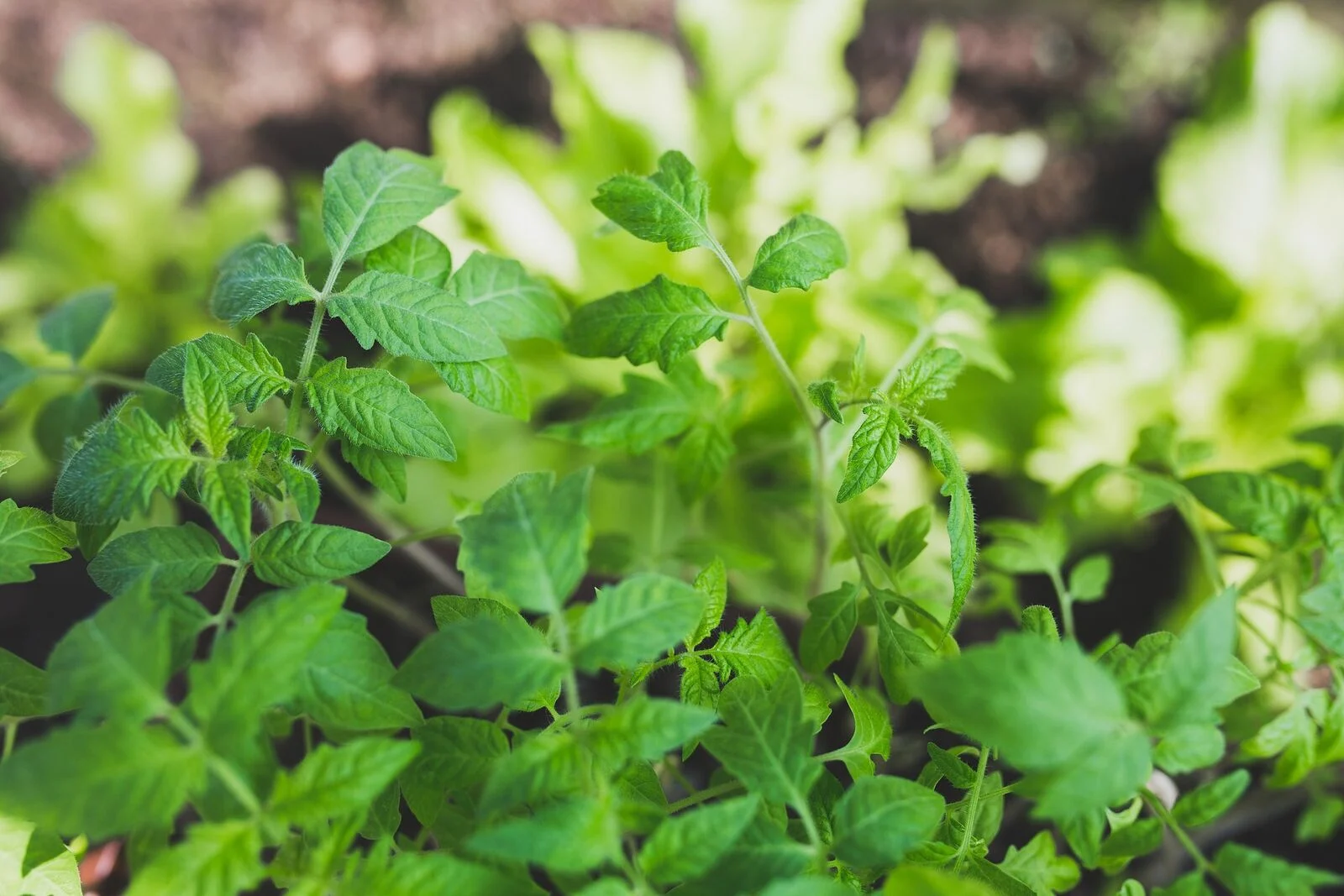
Tomato leaves can also help to prevent eggs being laid on the leaves of your cabbage plants. To do this, make a cold water extract or mulch your plants with the leaves or shoots of tomato plants. However, you should mulch regularly with fresh leaves so that the smell remains intense. You make the cold water extract by soaking approx. 1 kg/2.2 pd of fresh leaves and shoots in 10 L/21 pt of water and leaving to infuse for 1 - 2 days. The extract is then strained and sprayed undiluted onto your plants. Ideally, you should do this on a cloudy day.
Nasturtium Against Cabbage White Butterflies
Nasturtium is a good companion for cabbage plants because it serves as a kind of bait plant and protects your cabbage from infestation by the cabbage white butterfly. Nasturtium is even tastier for the caterpillars of the cabbage white butterfly than cabbage, which is why the cabbage white butterfly prefers to lay its eggs on the leaves of the nasturtium. This means that cabbage plants are spared.
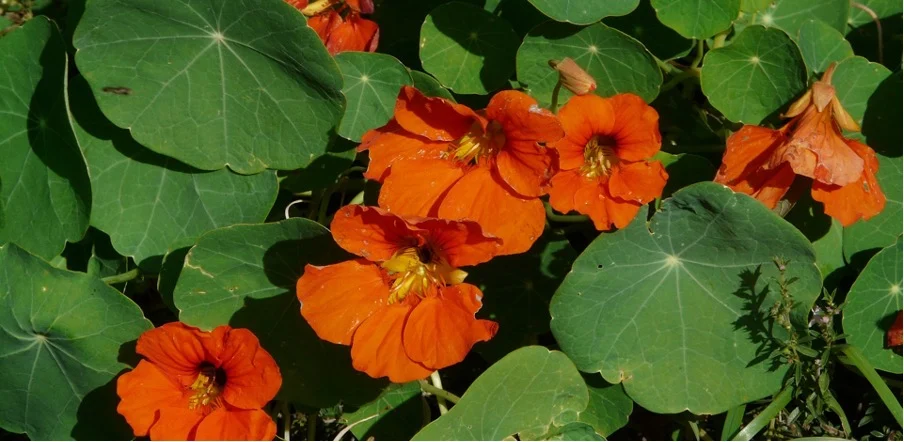
Use Crop Protection Nets Against Cabbage Pests
A good way to protect your cabbage plants from cabbage white butterfly infestation is to cover the plants with crop protection netting. The close-meshed nets make it difficult for the cabbage white butterfly to lay its eggs on your plants. This also makes it harder for other pests, such as slugs and snails, to get to your plants. You can find out more about snails in the garden in our article Controlling Snails.
The nets should be stretched over the plants after planting or as soon as the first leaves appear after sowing. You can find out more about growing cabbage in the garden and other pests and diseases in our article Planting Cabbage. These then remain on the plants for the entire cultivation period and are only removed when caring for and weeding your cabbage.
However, it is important to check your plants for infestation before covering them with netting and to remove the eggs before covering them. You should also weigh down the netting so that the moths cannot reach the plants from below. Nevertheless, check your plants regularly for butterfly eggs in case the cabbage white butterflies have found a way to get to your plants.
Beneficial Insects Against Cabbage White Butterfly Caterpillars: Predators
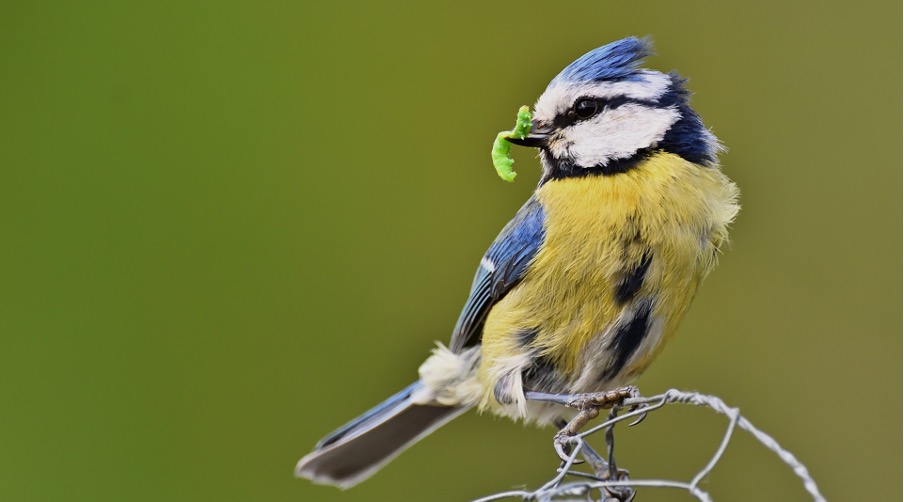
Like most other insects, the cabbage white butterfly has some natural enemies that curb its spread. These include, for example, some predatory beetles and ground beetles, shrews, hedgehogs and also chickens, some birds and ichneumon wasps, which eat the butterfly's caterpillars. You can find out how to attract birds to your garden in our article on Ideas for a Bird-Friendly Garden.
Ichneumon Wasps Against Cabbage White Butterflies
In contrast to their relatives, parasitic wasps are smaller and narrower. They do not sting and are harmless to humans. Like wasps, they have a typical wasp waist. They also have a long laying stinger on their abdomen, which makes them easy to recognize. They are parasites and lay their eggs in caterpillars such as the cabbage white butterfly. The young larvae then eat the caterpillars from the inside and overwinter in the hollow bodies of the caterpillars. You should therefore take care not to damage such shells in winter so that the ichneumon wasps survive. Cut branches and thickets provide shelter and protection. You can also buy parasitic wasps in shops, but in general you should always introduce beneficial insects with care. A garden is a sensitive ecosystem that can become unbalanced as a result. We therefore only recommend using beneficial insects in cases of very heavy infestation and when other means no longer help. You can find out more about parasitic wasps and other beneficial insects in our article Beneficial Insects: Insects & Other Animals in the Garden.
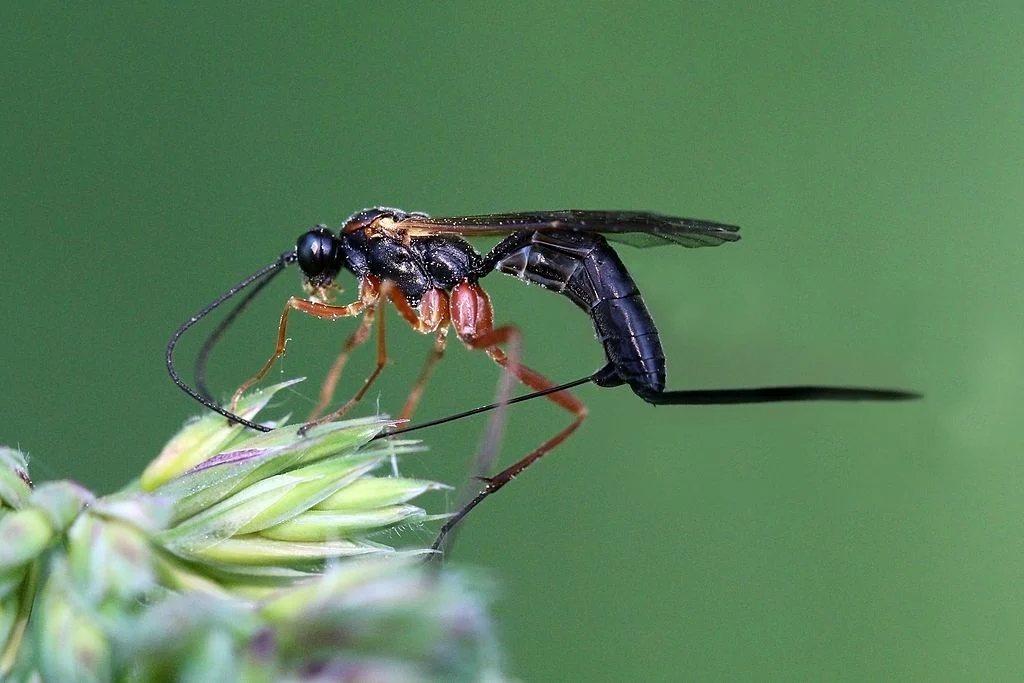
If you have any questions or comments, please write to us at [email protected]. Would you like to receive helpful gardening tips all year round and plan your own beds optimally? Then register here or download the Fryd app for Android or iOS.
Fryd - your digital bed planner
Cover picture by Anna Sulencka on Pixabay.

Marielena
Marielena studies agricultural and environmental sciences. She gardens at home and at an allotment and likes to try out new things.
Learn MoreCurrent Topics in the Community
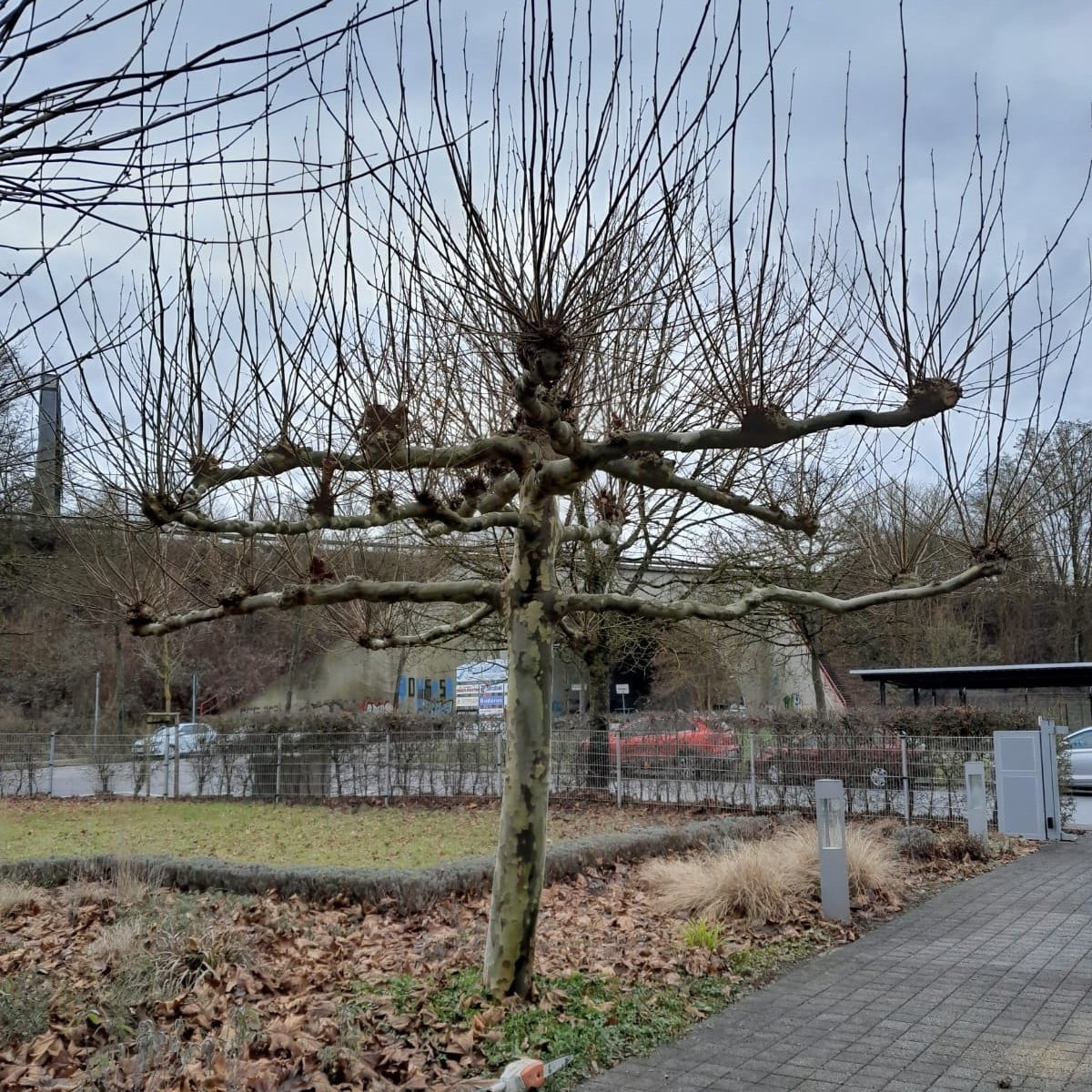
Liked 1 times
Today, after a long break from work due to surgery, I got back to work. I went up high to cut the plane trees.

Liked 5 times
The seeds have arrived.
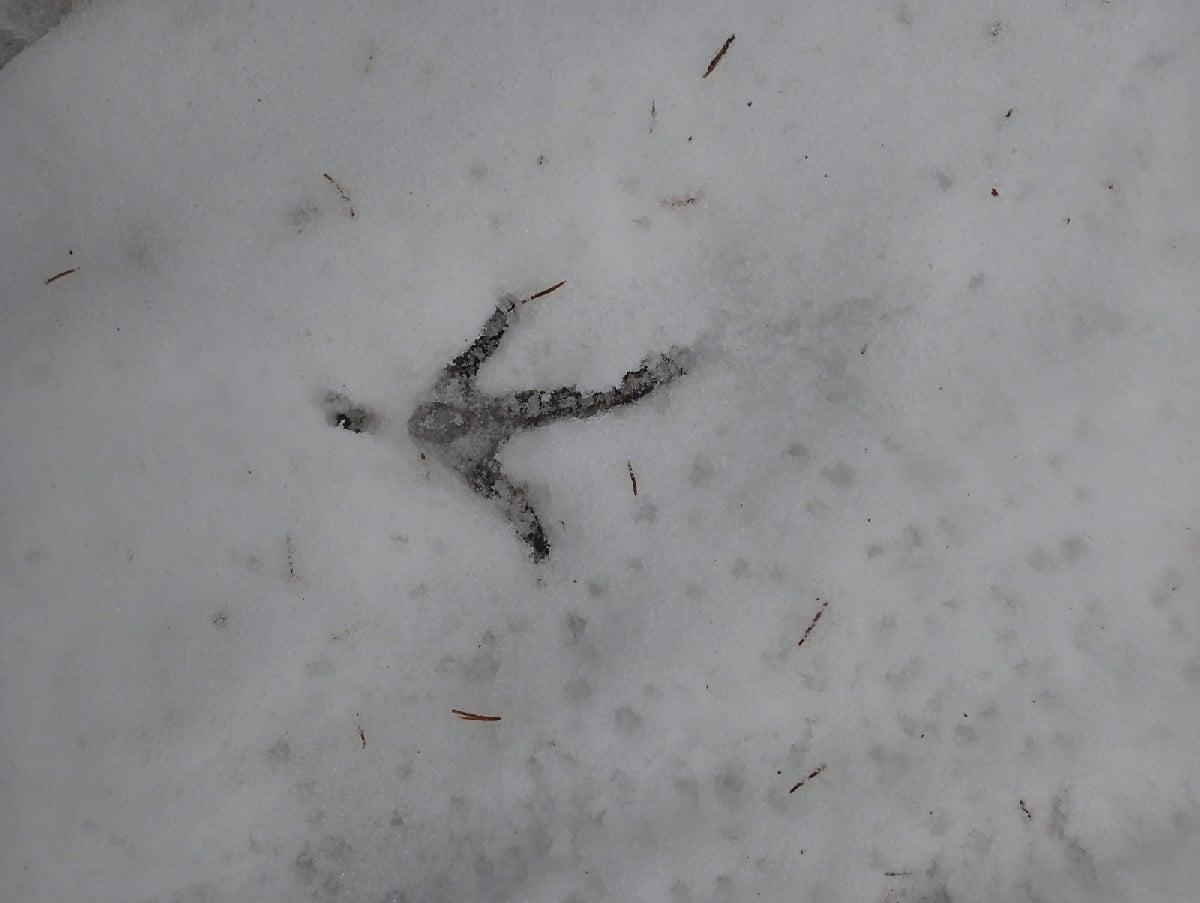
Liked 1 times
Which animal left this track? #riddle
Show 4 answersPopular Articles

Overwintering Parsley: How to Do It Successfully

How to Grow Lettuce in Winter: Varieties, Sowing, Harvesting

Growing Sage Plant: Tips for Sowing and Harvesting

What Herbs Can Be Planted Together?

Create & Design a Permaculture Garden

Overwintering Plants: Tubs, Pots and Raised Beds

Pruning, Fertilizing & Propagating Currants: Care Tips

Pruning Raspberries: How to Do It

Vegetable Garden With Greenhouse: How to Use Greenhouse Effect

Winterizing Beds and the Garden: How to Do It
FAQ
Where do cabbage white butterflies lay their eggs?
The cabbage white butterfly prefers to lay its eggs on the underside of leaves of cabbage plants (cauliflower, broccoli, kale, kohlrabi, Brussels sprouts, pointed cabbage, white cabbage), nasturtium, caper plants and foxtail plants.
What can you do against cabbage caterpillars?
If cabbage caterpillars are already on your plants, the only thing that usually helps is collecting them. Sprinkling garlic powder, rock flour or seaweed lime on your plants should direct the caterpillars away from them.
Which plants help against cabbage white butterflies?
Strong-smelling plants such as aniseed, basil, mugwort, peppermint, rosemary, sage, celery, marigold, thyme and tomatoes protect your cabbage plants from infestation by the cabbage white butterfly.
What to do with the caterpillars of the cabbage white butterfly?
You should move the caterpillars of the cabbage white butterfly far enough away from your plants, at least 25 m, but preferably approx. 100 m.